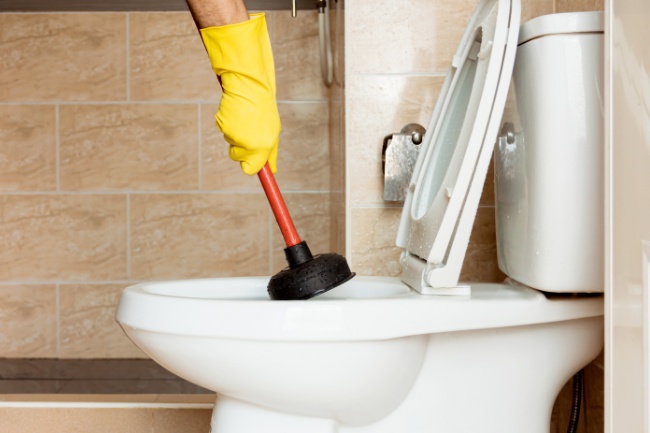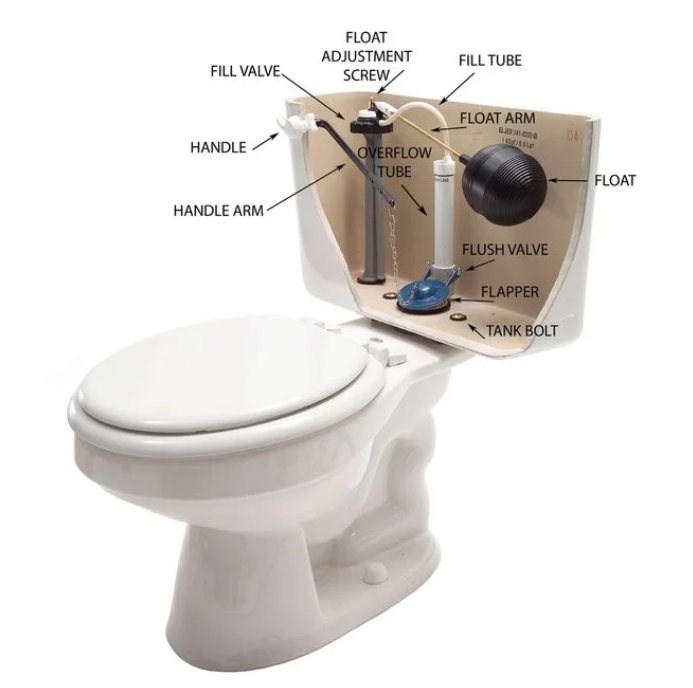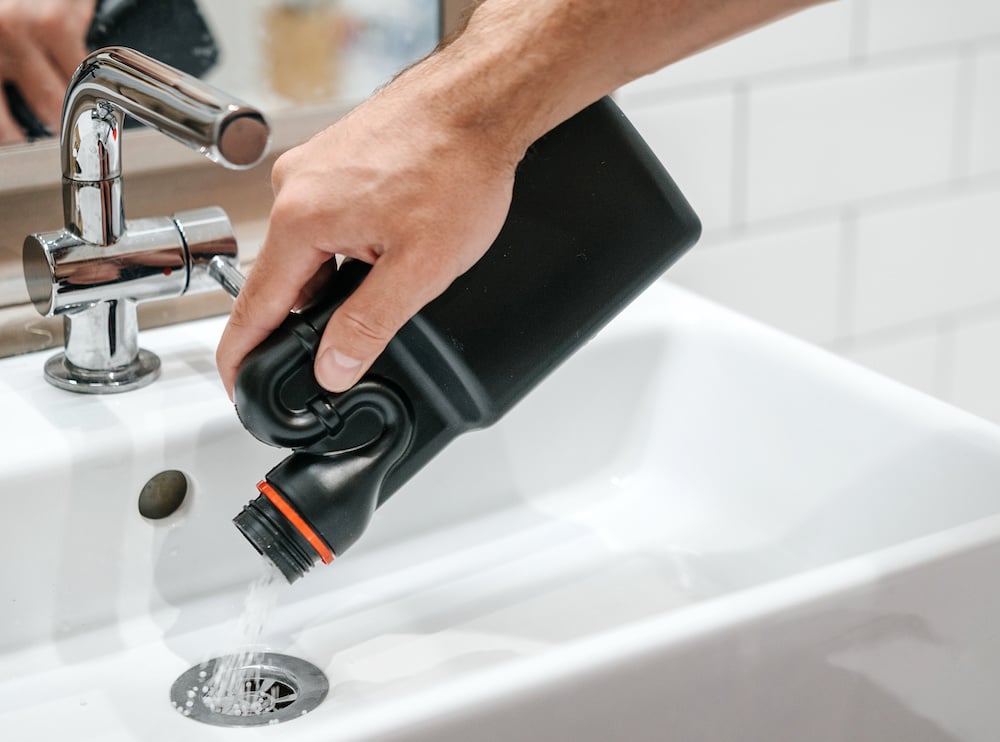DIY: Cleaning/Replacing a Drain Trap
Posted by William Heinselman on
 What is a Drain Trap?
What is a Drain Trap?
A drain trap, also referred to as a U-bend or P-trap by some, is a pipe structure commonly found under your sink. This curved piece of pipe traps water within it, forming a plug that keeps sewer gases from flowing back up the pipe and into your home. This trap is also a frequent destination for hair, grease and other solid debris that forms the bulk of a clog.
Because of a drain trap's design, heavy objects that fall down the drain often become stuck at the bottom of the trap. Some drain traps have a special cap on the bottom, which you can unscrew to allow such objects to fall out easily, preventing them from becoming the core of a clog.
Why Would I Need to Remove a Drain Trap?
There are a few reasons why you would need to remove a drain trap, including:
- A large clog in the trap.
- Jewelry falling into the pipe.
- Current pipe is leaking.
- Your old trap no longer meets plumbing code standards (typically only a concern if you are preparing to sell your home).
The first two examples are the most common reasons why you would want to remove your drain trap. For example, many people have a story about a family member who was washing the dishes or rinsing off their hands when their ring, watch, or bracelet slipped off their hand and went down the drain. In the event of such a catastrophe, quickly shutting off the faucet and removing the drain trap is the surest way to retrieve the jewelry before it can become damaged.
How do I Remove a Drain Trap?
First, you are going to need the following:
- A bucket (to catch the water and debris from the trap)
- A pair of channel pliers or an adjustable wrench
- A wire brush (to clean the drain trap)
These items are fairly common and can be found at your local hardware store quite readily. If you are replacing the drain trap entirely, be sure to have an accurate measurement of the size of your existing trap on hand so that you can buy a replacement that will fit correctly.
Once you have the appropriate tools on hand for the job, you are ready to begin removing your drain trap.
- Turn the faucet off. If you are attempting to retrieve an item that has fallen down the sink, it is especially important that you shut the faucet off right away to prevent it from pushing your object down the line past the drain trap.
- Place a bucket underneath the drain trap. It should come as no surprise that a drain trap is full of water, so having a bucket to collect the water that will come spilling out is a must. Plus, the water coming out of the drain trap will likely have debris or other contaminants in it, and you do not want that spilling around the base of your cabinets.
- Loosen the slip nuts. Take your pliers or wrench, and use the tool to turn the slip nuts on the pipe one-half turn counter-clockwise to loosen them enough for you to finish unscrewing them by hand.
- Remove the trap from the sink. Upend the contents over the bucket. Hopefully, if you are attempting to retrieve a piece of jewelry from the trap, it will fall out easily.
- Clean out the drain trap. If the trap was clogged, you can use your wire brush to ram the clog out of the trap. Otherwise, simply scrub the excess debris from the walls of the pipe to ensure that is can provide a smooth flow of water once it is replaced.
- Reattach the drain trap. Screw the slip nuts on by hand, then finish tightening with your wrench or pliers. Be careful not to over-tighten the pipe. A half-turn with the wrench should be all you really need to make sure that the pipe is secured properly after you have finished securing the slip nuts with your hands.
- Test the pipe. Run your faucet for a few moments to make sure that your drain trap has no leaks. Keep an eye on the drain trap as you run the water to see if water is leaking from the slip nuts or drain plug. This will also refill the drain trap so that it can serve its function as a barrier against sewer gas infiltration once more.
Cleaning or replacing a drain trap is a relatively simple plumbing operation for any homeowner. Whether you need to recover that diamond engagement ring or just need to clear a stubborn clog from your pipes, with a little know-how and effort, you can easily save yourself a plumbing headache.
If, however, you find that your sink still backs up when you use it, you may have a clog further down the pipe, which may require more extensive efforts to clear. Should you need more advice regarding the plumbing of your home, or if you have a problem that you cannot fix, please do not hesitate to call your Sacramento sewer & drain experts for help. No job is too big or small for our experienced contractors.
Topics: Commercial Plumbing, Home Plumbing, DIY, Drain Cleaning and Repair






